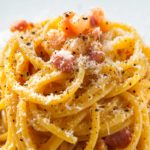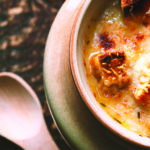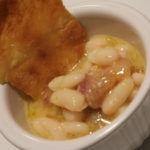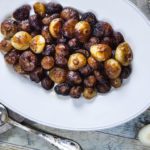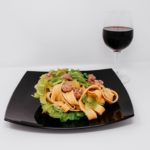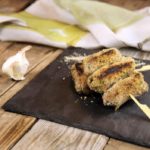MINI SAVOURY PANETTONI

These mini savoury panettoni are a bit time-consuming but not hard to do, you can decide whatever stuffing you love. The classic recipe included prawns with cocktail sauce, smoked salmon with cream cheese and chives and lemon zest. Or cold cuts and cheeses, or vegetarian fillings.
You can choose whatever filling you love.
Prep Time: 30 minutes | Cooking Time: 20 minutes | Total Time: 50 minutes (4 hours for cooling down) | Yield: Makes 6 servings.
Ingredients
- ¼ cup (50 ml) warm milk
- 13 g fresh baker’s yeast or 4 g dry active yeast
- 1 egg, beaten
- 3 ½ tbsp (50 g) butter, room temperature, cut in small pieces
- 1 cup (240 g) bread (Manitoba) flour
- 1/2 tbsp honey
- 25 ml water
- 1 ½ tbsp (20 g) white sugar
- Butter for the tin
- 4 tbsp fresh cream or an egg yolk + some milk for glazing
Preparation
Add the warm milk, honey, and water to the bowl of a stand mixer fitted with a dough hook attachment on medium speed. Add the yeast and, after a minute, the egg.
Then add the flour, and when it is well mixed, add the sugar, and finally the salt. If the dough is too dry, add some water. The total time including the kneading of the dough takes around 15 minutes.
Let the dough sit in a deep bowl and cover with plastic wrap. If the temperature in your kitchen is around 77 F (25 C) let it rise for 2 hours. If your temperature is around 66 F (19 C) like in my kitchen, add half an hour.
After the dough has doubled, divide it into 6 balls and knead it, bending the folds under each ball.
Butter the muffin tin and place one ball in each hole. Let it rise again for 2 hours, covering with plastic wrap.
Modify the rising time according to the temperatures in your kitchen.
Pre-heat the oven to 350 F (175 C). Using a pastry brush, coat the balls with fresh cream, or an egg yolk mixed with 2 tablespoons of milk. Bake for 20 to 25 minutes.
When the pannettoni reach room temperature, move to a cooling rack. They will be firm enough to be cut in thin slices the next day. Calculate making 5 cuts, top included. Fill the layers every 2 cuts, in order to make a sandwich. Choose your favourite canapé fillings. Once you have finished, make at least one vertical cut.
